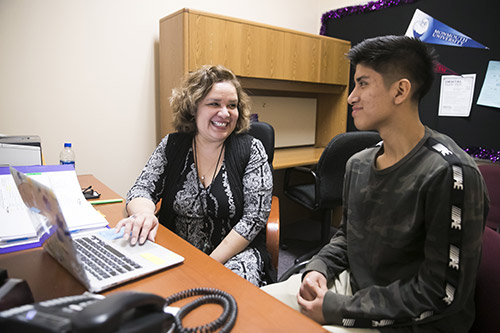English Language Development
Jump to: Identification | Instruction | Contact
English Language Development instruction develops multilingual learners’ academic English skills to thrive in school, careers, and the community.
Identification
The English Language Development (ELD) Office identifies eligible students in Kindergarten through Grade 12 whose home, native, and/or dominant language is a language other than English.
All families complete the Maryland Home Language Survey upon registration to determine student eligibility. Eligible students are then screened to determine qualification for ELD services using the WIDA Screener Assessment and the WIDA Screener for Kindergarten.
Parents or guardians of qualifying students are notified annually and have the opportunity to accept or waive direct services.

Instruction
Multilingual learners receive ELD instruction aligned with the WIDA English Language Development Standards, 2020 Edition and grade-level content standards. Students practice using academic language to narrate experiences, provide facts and information, explain ideas and processes, and to make arguments. Students build their interpretive and expressive language skills in the areas of listening, speaking, reading, and writing.
ELD teachers and classroom teachers plan regularly in order to align English language instruction with grade-level content instruction.
Elementary School
In elementary schools, students may receive English language instruction in small groups or through co-teaching classroom models.
Middle and High School
In middle and high schools, students may receive English language instruction in ELD courses outlined in the HCPSS middle and high school course catalogs or through co-taught content courses.
Contact
- Deb Puhak, Coordinator, deborah_puhak@hcpss.org
- Pam Freedman, Resource Teacher, pamela_freedman@hcpss.org
- Multilingual Family Services
- Language Access Services for information in interpretation and translation services